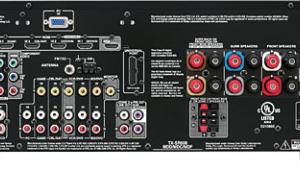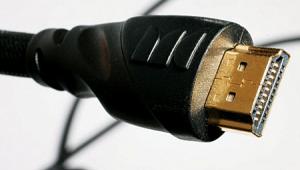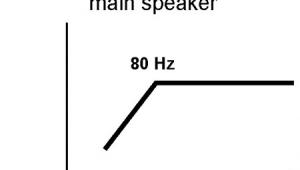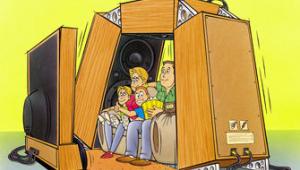THX ULTRA: Episode 2 Page 4
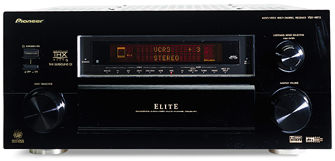
Private Ryan was an especially effective demonstration of another Ultra 2 hallmark: stage stability and consistency. I placed myself in different locations around the room to test Ultra 2's claim of seating-location nonfavoritism—with impressive results. Naturally, THX has always been concerned with timbre-matching and other stage-stability issues, but what they've done here, with some help from the Snell speakers, is a step beyond. I won't tell you that the sound is exactly the same if you plant yourself well off-axis or well to the rear of the stage, but it's pretty damn close—and that's saying something. For starters, the back channels don't pull nearly as much to one side or the other as they do with EX. In fact, they really don't pull at all. Again, I found myself notating the progress THX has made with these back channels and how they produce a wide, stable image even with the side-by-side placement. The front stage was remarkably consistent, as well. Moving from one side of the room to the other resulted in an almost-negligible amount of audible shifting that you'll only notice if you're really paying attention. The AMC900dp plays no small role in this effect. Its highly diffuse radiation significantly reduces the localization and unbalanced level perception that result from parking yourself too close to a particular speaker.
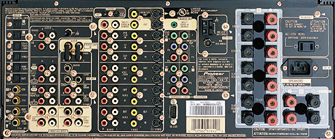
Man doesn't live in 7.1 channels alone—at least, not yet. So I wasn't about to let this system off the hook without hearing how it handled more-traditional fare. Finally, I got my two-channel fix with my trusty Burmester discs, a couple of the excellently done Stereophile test discs, and some cuts from a couple of the Narada Celtic collections. The first thing that grabbed me was the XA1900THX's truly outstanding voicing. A capella tracks like Sileas' "Puirt a Beul" from Celtic Odyssey were clean and true, with a treatment of both male and female voices that was as accurate as I've heard from any speakers I have reviewed since the Revel Performas (November 2001). Two-channel tracks revealed an interesting trade-off in imaging. I was never able to coax a dead-centered image out of the XA1900THXs, but this is hardly surprising considering their placement within a cabinet and their inability to be toed-in. This isn't to say that the XA1900THXs didn't image well, though. In place of a pinpoint central image was a front stage that was highly consistent from one end to the other. Naturally, without the center channel, the effect with music wasn't as bulletproof as it was with movies, but there was as little side-to-side pulling as you're ever going to find with a two-channel system. The sweet spot was a good 8 feet wide; even outside that range, the amount of shifting was relatively minor.
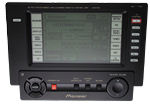 Last but not least, you knew SACD and DVD-Audio would make their way through this system before it went away. The Pioneer receiver offers several options for high-rez playback: straight throughput, using either the sides or the backs as your surrounds, or (if you're willing to accept the extra conversion) a 7.1 treatment. I listened mainly in 5.1 using the backs as the surrounds, although the 7.1 version was not without its charms. As with other 5.1 music, the backs offered nearly a mirror image of the fronts (minus vocals), and the sides had a strictly ambient role. Whether in 7.1 or 5.1, the system did an excellent job of conveying the benefits of high-resolution material, with silky highs, excellent stage depth, and a clear sense of separation between the various vocals and instruments. The Jerry Goldsmith soundtrack collection on SACD was especially dynamic and clean all around. Rather than melding into a two-dimensional blur, the presentation remained highly focused and spacious, and the division between the brass, strings, percussion, and other elements took no effort to appreciate. The Snell speakers' voicing shone through again, making Jim Morrison's voice sound as good as it's ever going to on the DVD-Audio version of L.A. Woman. "Riders on the Storm" was a good ride indeed, and maybe even more entertaining in 7.1 where its ethereal ambience was all the more developed and spacious.
Last but not least, you knew SACD and DVD-Audio would make their way through this system before it went away. The Pioneer receiver offers several options for high-rez playback: straight throughput, using either the sides or the backs as your surrounds, or (if you're willing to accept the extra conversion) a 7.1 treatment. I listened mainly in 5.1 using the backs as the surrounds, although the 7.1 version was not without its charms. As with other 5.1 music, the backs offered nearly a mirror image of the fronts (minus vocals), and the sides had a strictly ambient role. Whether in 7.1 or 5.1, the system did an excellent job of conveying the benefits of high-resolution material, with silky highs, excellent stage depth, and a clear sense of separation between the various vocals and instruments. The Jerry Goldsmith soundtrack collection on SACD was especially dynamic and clean all around. Rather than melding into a two-dimensional blur, the presentation remained highly focused and spacious, and the division between the brass, strings, percussion, and other elements took no effort to appreciate. The Snell speakers' voicing shone through again, making Jim Morrison's voice sound as good as it's ever going to on the DVD-Audio version of L.A. Woman. "Riders on the Storm" was a good ride indeed, and maybe even more entertaining in 7.1 where its ethereal ambience was all the more developed and spacious.
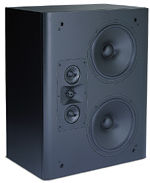 When the dust settled, I was clearly impressed with this system—from the philosophy of Ultra 2 through its execution and right down to the performance of the Snell and Pioneer equipment in the trenches. The processing side of Ultra 2 isn't a radical shift, but it's undoubtedly a positive one. Surround EX and some of the seven-channel processing modes that have emerged from various factions have already showed us that seven-channel schemes can be highly effective. Ultra 2 reminds us that these ideas have already been, and will continue to be, improved as they mature. The Ultra 2 philosophy and its focus on the realities of home theater show key progress in simplifying and maximizing the home theater experience for a wider range of users. While I don't see home theater systems becoming as ubiquitous as computers any time soon, their role as the entertainment center of our homes is growing every day. It may only be a matter of time before a complete home theater system is as common as the TV itself. THX is ready for this potential reality. Are you?
When the dust settled, I was clearly impressed with this system—from the philosophy of Ultra 2 through its execution and right down to the performance of the Snell and Pioneer equipment in the trenches. The processing side of Ultra 2 isn't a radical shift, but it's undoubtedly a positive one. Surround EX and some of the seven-channel processing modes that have emerged from various factions have already showed us that seven-channel schemes can be highly effective. Ultra 2 reminds us that these ideas have already been, and will continue to be, improved as they mature. The Ultra 2 philosophy and its focus on the realities of home theater show key progress in simplifying and maximizing the home theater experience for a wider range of users. While I don't see home theater systems becoming as ubiquitous as computers any time soon, their role as the entertainment center of our homes is growing every day. It may only be a matter of time before a complete home theater system is as common as the TV itself. THX is ready for this potential reality. Are you?
Elite VSX-49TX Receiver $4,200
Pioneer Electronics
(310) 952-2000
www.pioneerelectronics.com
Dealer Locator Code PIO
XA1900THX L/C/R Speaker $1,500
AMC900dp In-Wall Speaker $2,000/pair
ICS Sub24 Subwoofer $2,600
Snell Acoustics
(978) 373-6114
www.snellacoustics.com
Dealer Locator Code SNE
